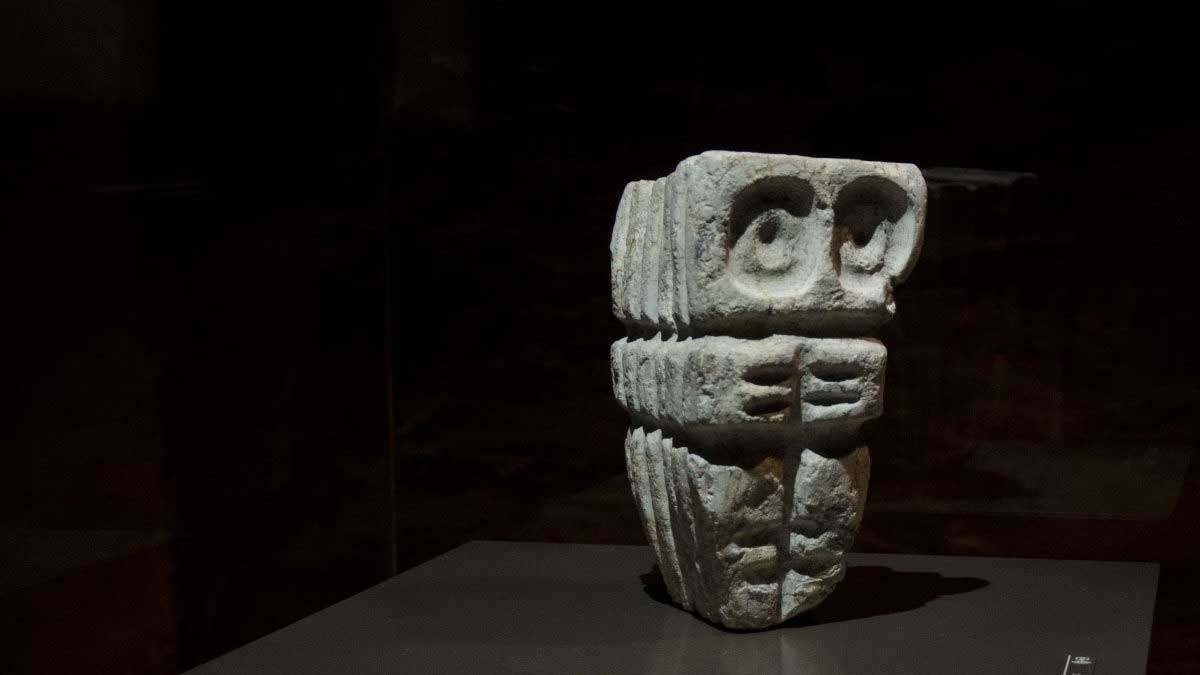La Casa del Alabado is a privately owned museum in an old Spanish-colonial residence located very near Quito’s historic San Francisco Plaza. And when I say old, I don’t mean a hundred years or so. I mean truly antique.
The house was built in 1671. Therefore, the building itself is worthy of a visit even without its collection of artifacts.
Renovations have maintained the central structure which includes two interior courtyards, one in which tables and chairs await visitors. You could easily spend time just enjoying the ever-changing clouds in the Andean sky. Exterior passageways on the second floor allow visitors to flow in and out of exhibits, giving the mind time to pause in between rooms.
Believe me, this is a place where a pause is necessary. Each room requires contemplation as your mind processes the beauty of each and every piece you see.
Ancient As Compared to Antique
In the scheme of things, the Casa del Alabado may be antique but its artifacts are ancient. We saw stunning pieces in amazing condition dating as far back as 4500 BCE, around the time the wheel was developed in Mesopotamia. Incredibly, this collection constantly surprises the visitor. Perhaps this is because the curators chose not to organize the collection by era or by time or even by culture. Instead, they found commonalities within each civilization and display those pieces side by side.
My husband and I are both museophiles, having visited some of the most interesting collections in the world. What makes the Casa del Alabado so interesting is that each piece harked back to another we had seen – many in San Francisco at the Asian Art Museum, others in Asian Art collections in Europe. Yes, the connections back to Asia are astounding. We saw figures reminiscent of Japanese Shogun Warriors and ancient Indian Yogis. We saw faces that could have come from ancient China or Japan. The connections were almost overwhelming. Yet, at the same time, we saw pieces that were essentially Andean – tied into the ancient cosmology that we see repeated again and again in the artwork even today.
La Casa del Alabado is An Archeology Museum Worth Visiting
The pictures in this article are just a small taste of what awaits you in this lovely space. Additionally, for those that worry that a museum will bore you, know that this museum is different. It’s exciting presentation makes it enjoyable for anyone who likes to learn or who enjoys art in general. Children will especially love hunting for the different animals on display. Just remember to ask for the list at the front desk when you arrive.
Still not convinced? The Casa del Alabado is small. We viewed the entire collection in about two hours. We’re pretty slow and methodical, taking many pictures along the way. Others will likely need only an hour or so.
Finally, this museum is worth just a walkthrough as it grounds your experience in a city where the Spanish-colonial infrastructure overwhelms the ancient signs of the Andean people who lived here before Europeans invaded. Truly, this space tells the history of Ecuador before the times of Columbus in a unique way. This American traveler highly recommends you visit!
Information For Your Trip
Casa del Alabado is best approached by foot as it lies on a narrow cobblestone street with no parking. For the latest entrance hours and fees, we recommend visiting their official website.
- Direction by Car, use WAZE and look for a parking lot in Quito’s Historic Center. Our favorite is Parqueadero La Ronda.
- Direction by Public Transportation for buses around Quito, use the Google Map link and click on get directions. Use the public transportation option to find the best from your current location.































Great pictures, Angie. Glad you guys are enjoying all that you can.
We don’t dare miss a minute 🙂